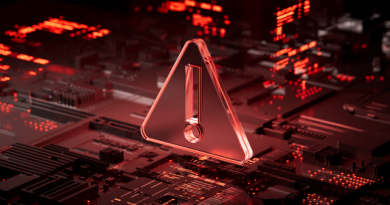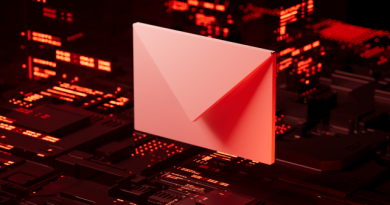Modern Attack Surface Management for Cloud Teams

Today’s distributed environment of remote working endpoints, cloud apps and infrastructure, IoT devices and much more, have made securing the attack surface a daunting challenge. The cloud brings an extra layer of uncertainty; assets and resources are spun up and down with minimal—if any—notice. An ESG survey about cloud detection and response (CDR) reported that 42% of respondents believe their existing tools aren’t up to the task of ephemeral cloud attack surfaces.
While many organizations have implemented a cloud security solution like CNAPP, risks persist outside of their cloud environments, and security teams have no way to find, view, and correlate everything across their organization’s attack surface.
Cloud teams (CCoE, Cloud Security Architects, and others) need to shift to more robust, modern ASM solutions that can combine in-depth cloud security data with other inventory information for a holistic view of risk. This empowers better decision-making, accelerates development, and
Getting the most value out of modern ASM
Not all solutions are built the same. Many vendors will cover the basic tenants of ASM: discovery, assessment, and mitigation. And while this a great first step, it’s not enough. Securing the cloud requires broad capabilities that enhance Cloud teams decision making to increase efficiency, optimize organizational security strategy, and reduce complexity.
Rapid, continuous attack surface discovery
First, teams need to identify an organization’s devices, accounts, applications, and cloud assets—both external and internal. This requires total and real-time visibility, which is only possible if the solution integrates with third-party sources and scans across on-premises, cloud, and hybrid cloud environments continuously.
Real-time risk assessment and prioritization
Next: assessment. Some vendors might only provide point-in-time assessments instead of continuous and contextual evaluations. Cloud teams need a strong ASM solution that goes beyond simple assessment by creating a risk score that enables rapid risk prioritization against several factors such as likelihood of an attack, possible impact of an outage, and asset criticality. Moreover, a risk score provides a helpful, at-a-glance look at the entire organization’s security posture that can be leveraged to quickly demonstrate success to a CIO/CTO.
The right solution will combine automated threat and vulnerability scanning, compliance scanning, and global threat intelligence. This provides a single-pane overview of prioritized API-associated risk across multiple cloud accounts, CVEs mapped to container clusters or images, and cloud misconfigurations mapped to compliance frameworks.
Proactive risk remediation and management
Risk prioritization helps Cloud teams anticipate adversaries faster, leading to speedier mitigation. ASM solutions should surface potential attack paths and leverage AI and ML to synthesize vulnerabilities, risks, security controls, compliance frameworks, and overall posture to provide teams with risk remediation suggestions. This will accelerate response actions and mitigate risk before the incident is realized. Bonus points if the solution can orchestrate and automate risk response across the enterprise.
The platform approach
According to a Trend Micro study, 89% of respondents have plans to consolidate security products or switch to a platform in the near future. And for good reason: a platform approach is essential to increasing efficiencies by reducing alert overload from disconnected security solutions. Full understanding and context of threats opposed to limited, piecemealed data insights, empower security teams to make risk-based decisions.
Trend Vision One™ Attack Surface Risk Management (ASRM), supported by Trend Micro’s industry-leading research, is a cornerstone solution within the Trend Vision One™ platform. ASRM empowers security leaders to consistently uncover, identify, and prioritize organizational risks, enabling them to swiftly take data-driven actions to proactively mitigate risk and reduce their attack surface.
The Trend Vision One platform is built to unify policy management, ASRM, and detection and response capabilities across the enterprise. The platform’s native-first, hybrid approach to XDR and ASM benefits security teams by delivering richer activity telemetry—not just detection data—across security layers with full context and understanding. This enables teams to contextualize risk and reduce the likelihood of attacks—while reducing false positives and noise within the environment continuously and proactively.
XDR for cloud, or CDR, correlates threat signals from cloud, multi- and hybrid-cloud, and on-premises environments to ensure alerts are prioritized and escalated against an ever-changing threat landscape. It enables teams to scale threat hunting and investigation by visualizing the full attack story using interactive graphs, MITRE ATT&CK™ mapping, and simplified search techniques.
Furthermore, Trend Vision One can automate and orchestrate workflows to enhance and augment security analysts’ efforts by speeding up standard operation procedures, removing manual steps, and enabling quick analysis and action such as vulnerability patching. According to ESG, 51% of organizations have improved threat detection as a result of automating security processes via playbooks.
Conclusion
Today’s attack surface challenges require modern approaches beyond piecemealed, inconsistent inventory. When you choose Trend Vision One Attack Surface Risk Management for Cloud, you are choosing a solution with next-gen capabilities:
- Faster detection due to total visibility with automated, continuous external and internal attack surface discovery across on-premises, cloud, and hybrid-cloud environments
- Reduces tool sprawl and cost by consolidating risk management capabilities like asset discovery, vulnerability prioritization, CSPM, EASM, and CIEM
- Threat detection and vulnerability scanning identifies and prioritizes current threats with actionable insights and guided remediation and prevention for cloud assets including APIs and containers
- Contextualized risk assessments, analysis, and scoring to prioritize which assets pose the highest risk and surface potential attack paths
- Quickly detect cloud misconfigurations with compliance framework scanning; enables compliance teams to understand their posture and easily identify security drift
- Custom remediation recommendations based on the situational risk or threats
- Automated remediation actions across the attack surface
- Connect Active Directory (AD), Microsoft Azure Active Directory (Azure AD), and AWS Identity and Access Management (IAM) tools to gain deeper insight into user accounts and apps/devices accessed by said user
- Ability to view and track unpatched vulnerabilities, system configuration, and user activity and behavior trends over time
- Clearly view public domain and IP under your organization and gain visibility into associated potential risk, vulnerability, or expired certificates
- View organizational cyber risk score across the entire environment
- Customizable dashboards and reporting for real-time updates and risk insights
To learn more about how Trend Micro can transform your cyber risk management practice with ASRM, click here.
Read More HERE




